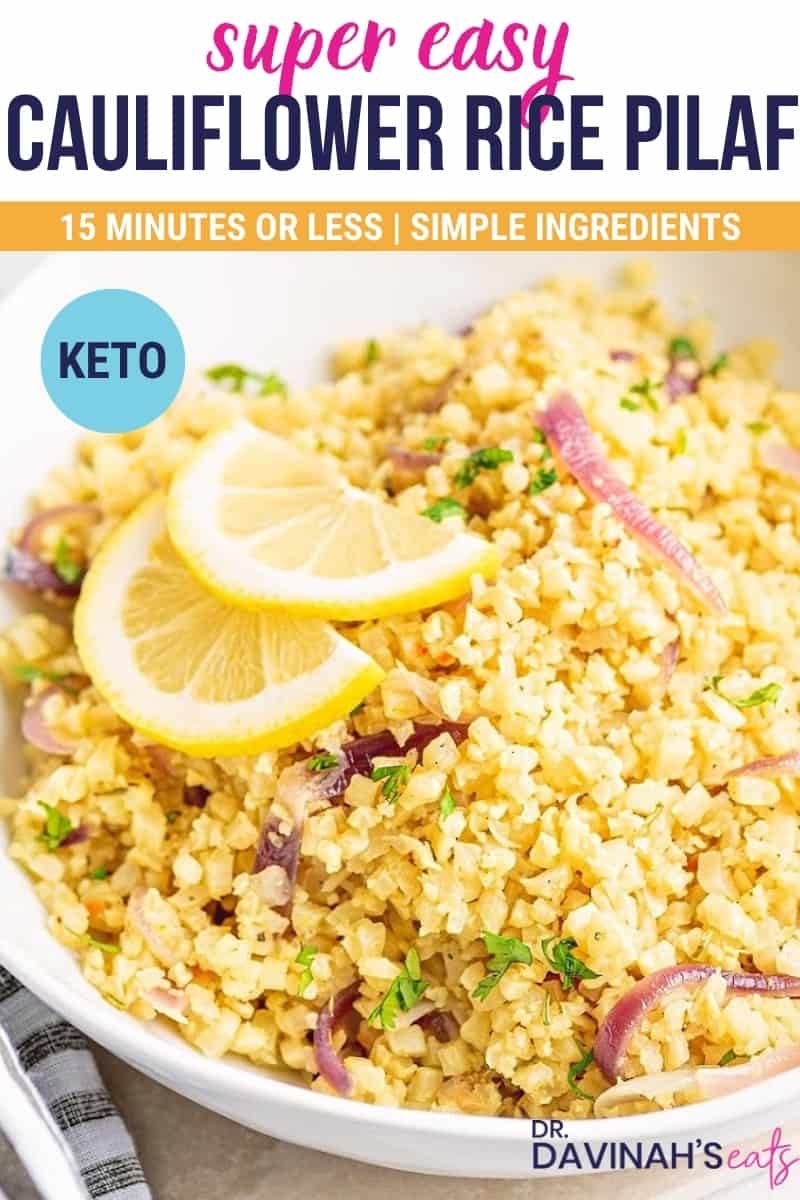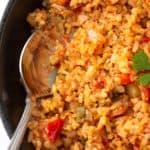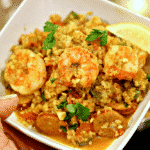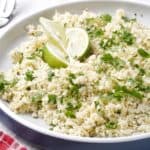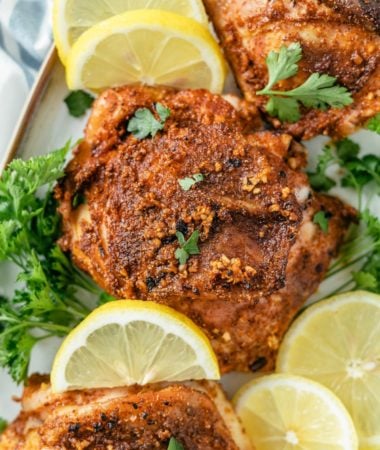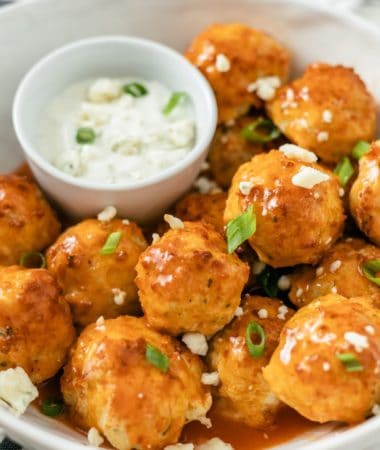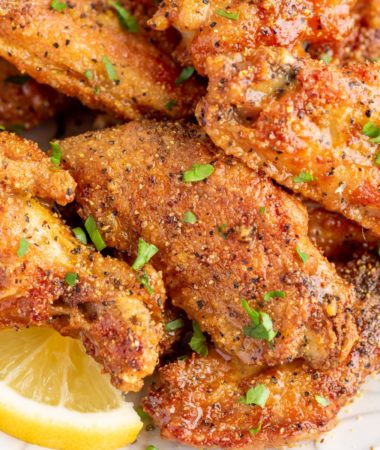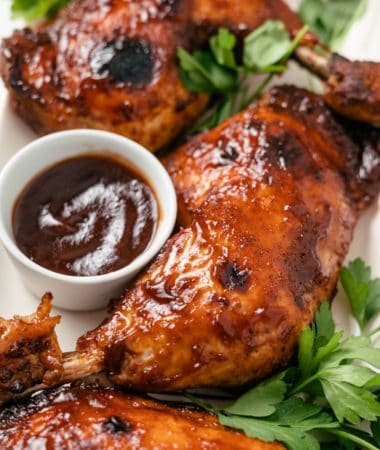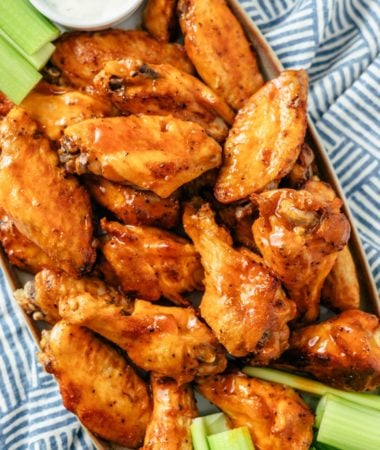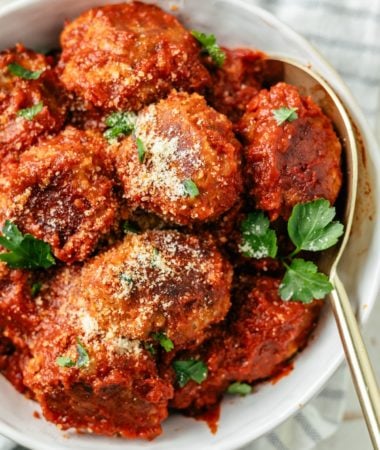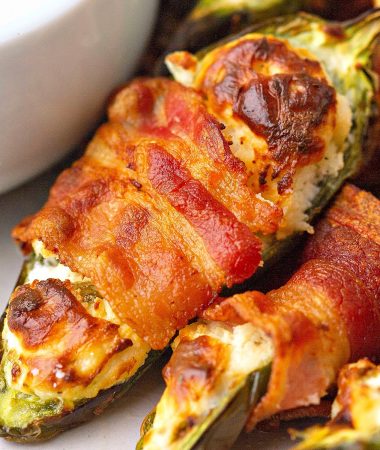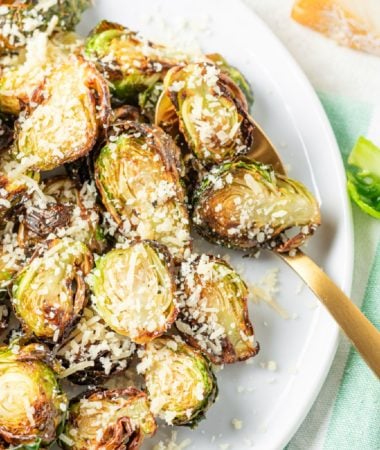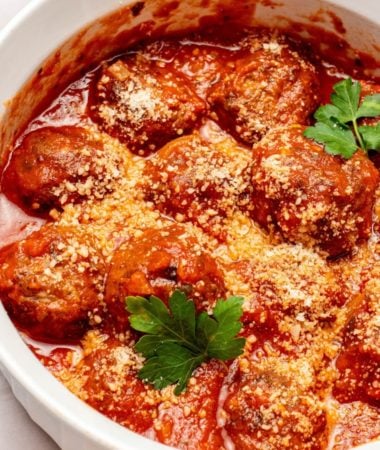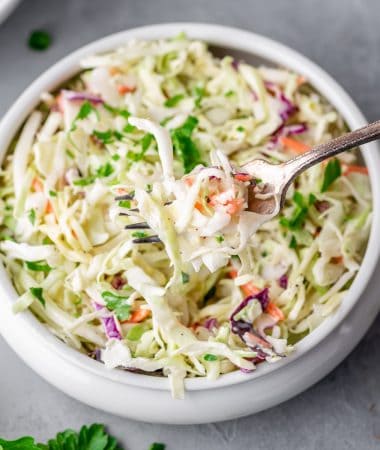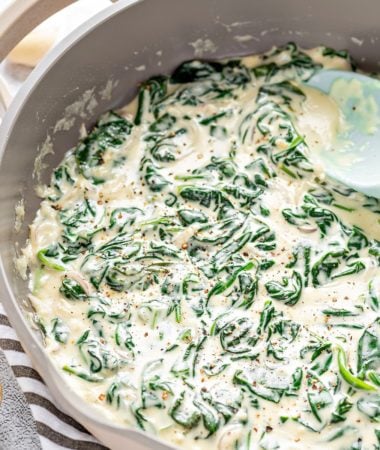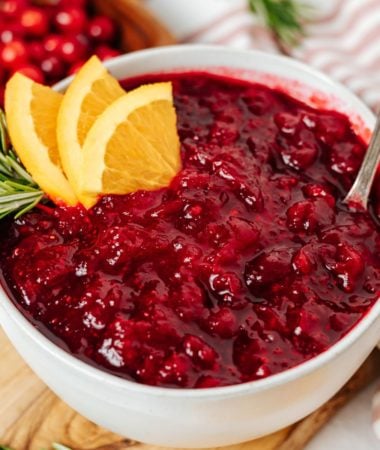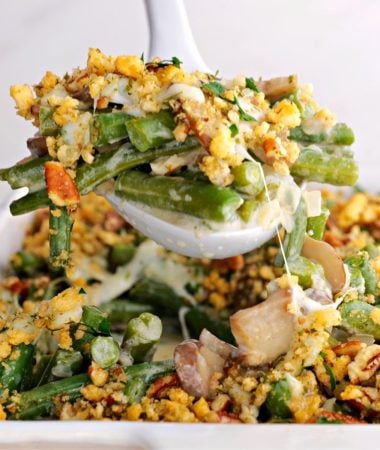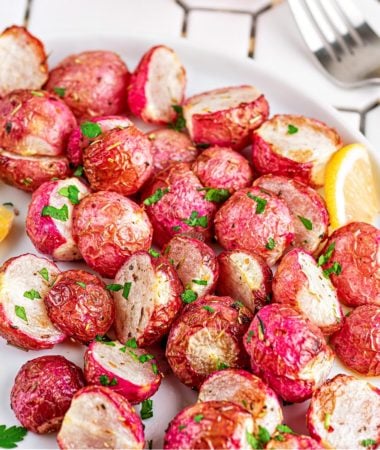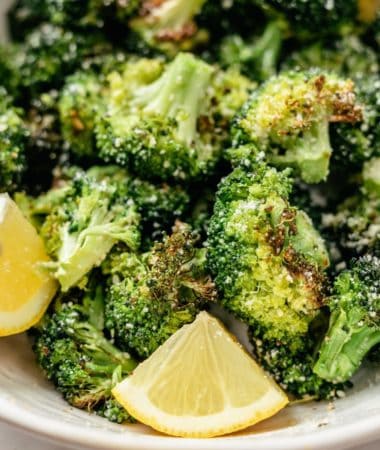This post may contain affiliate links to products I use and highly recommend. You can read my full disclosure . As an Amazon Associate I earn from qualifying purchases.
This Buttery Cauliflower Rice Pilaf is a versatile side dish that comes together with one pot in 15 minutes. Not only is it super easy to make, but it goes well with a wide variety of main dishes. It includes five ingredients and goes well with my salmon bites, air fryer tilapia, old bay shrimp, and pressure cooker pot roast.
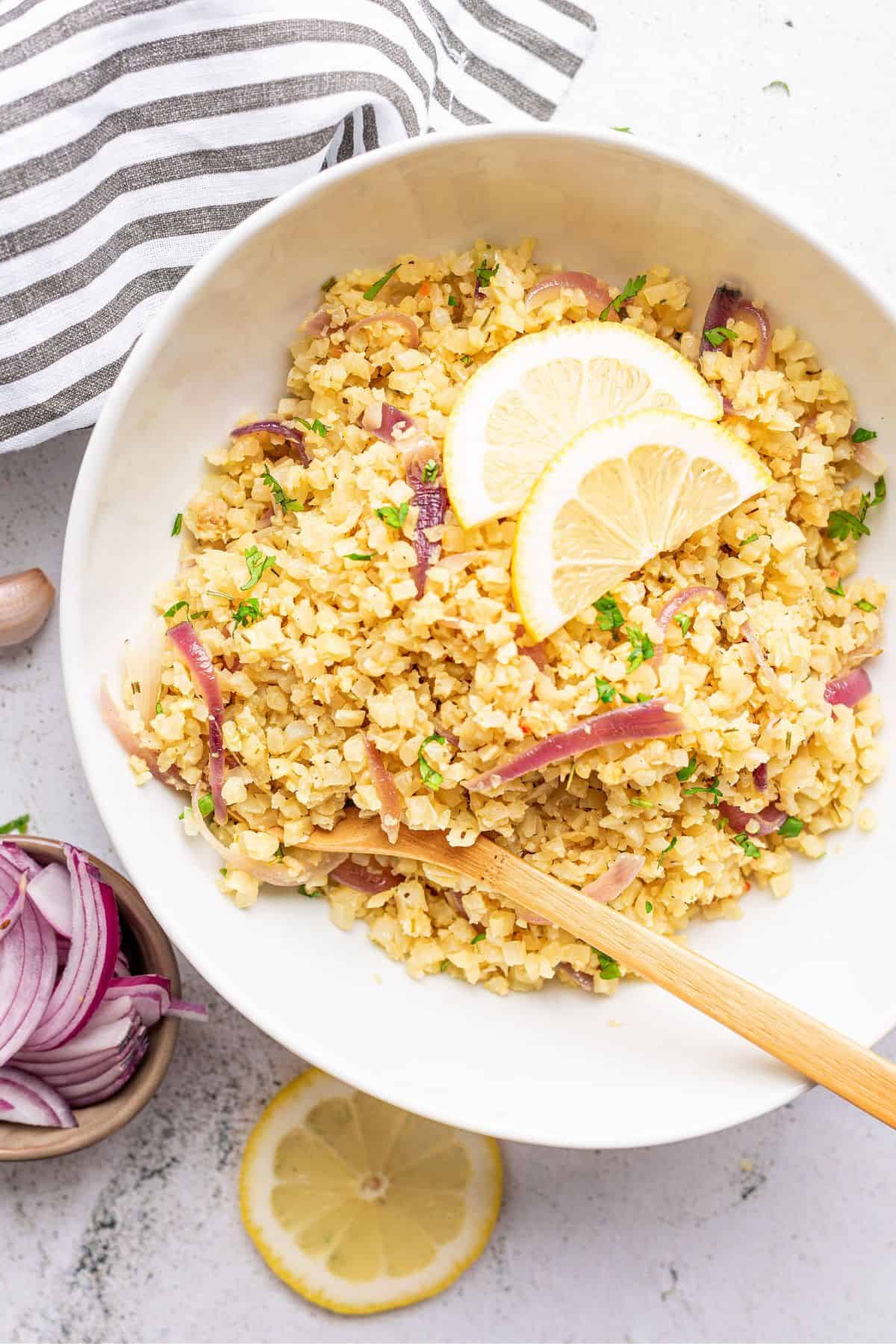
Why Make Cauliflower Rice Pilaf
Traditionally, rice pilaf is made of rice with seasonings cooked in broth. It can be tailored up with nuts, such as almonds, or even raisins to make it fancy.
The regular version has about 20g+ of carbs, something that is a no-go when you’re trying to maintain a low-carb or keto way of eating.
I made this version because by swapping regular rice for cauliflower rice, I’m able to have the deliciousness of pilaf at less than 5g net carbs per serving.
Plus, cauliflower rice works well with very few changes in so many recipes like my keto cauliflower mushroom risotto, cheese cauliflower grits, and keto cauliflower fried rice.
Ingredients Needed
This dish is easy to make and requires a handful of ingredients. To make cauliflower rice pilaf, you’ll need to gather:
- Cauliflower Rice: I pick mine up frozen from the freezer section in the market. However, you can use regular fresh cauliflower rice if you wish.
- Onions: I make this dish with shallots, red onions, or yellow onions, depending on what I have on hand. The key is to slice them thinly
- Herb Seasoning: I add quick flavor to this dish by using a spice and herb blend that is salt-free and includes 24 different spices.
- Better Than Chicken Bouillon I use a low-sodium version. But, you could swap this with your favorite flavor of concentrated chicken broth
- Butter or another cooking fat
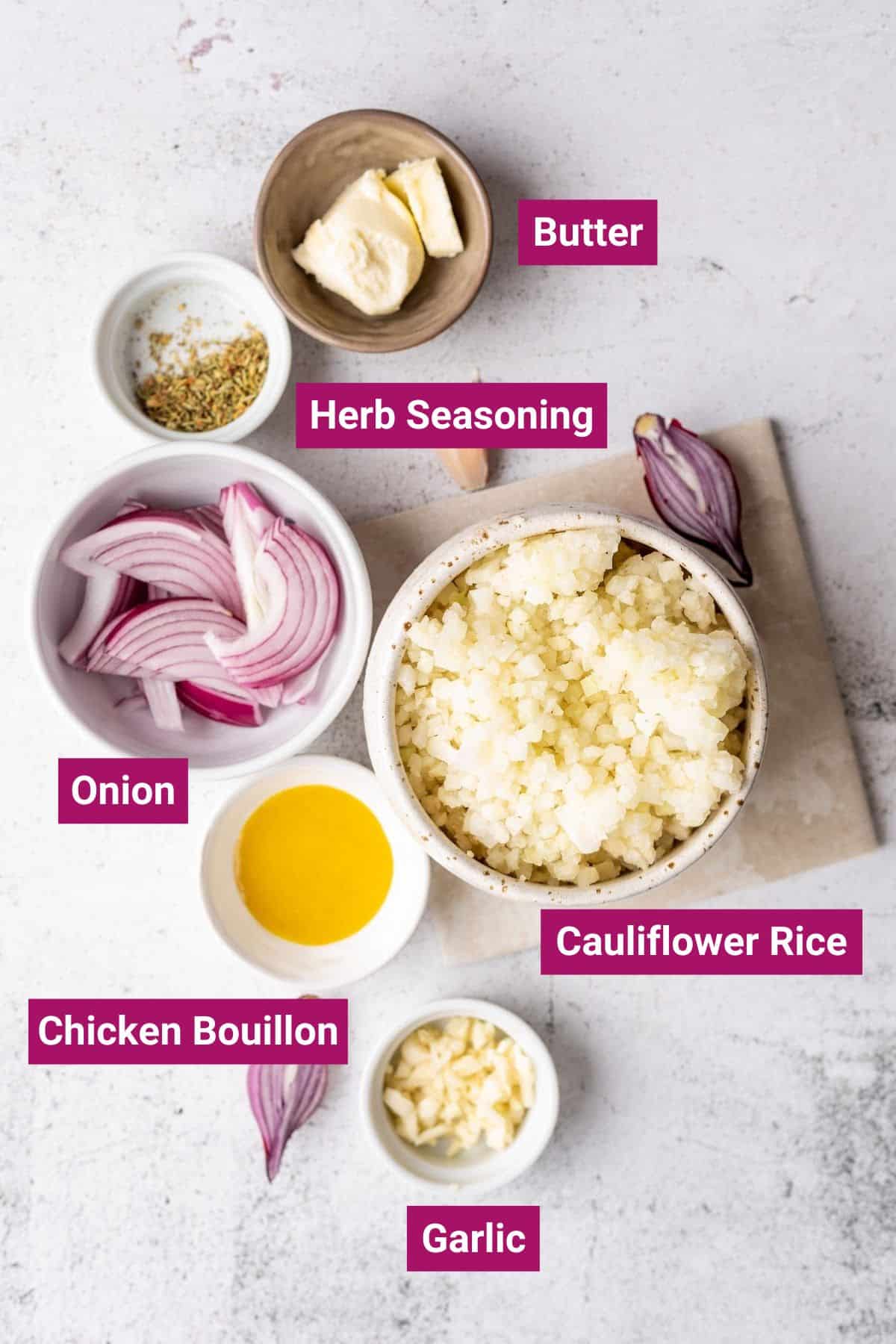
How to Make Cauliflower Rice Pilaf
This easy cauliflower pilaf uses stock concentrate to get all the flavor of the traditional dish quickly while keeping some of the bite in your copycat grain. You can use the photos below to see how I made it. Generally, you’ll want to:
- Melt butter in a large skillet
- Sauté the minced garlic and onions in the cooking fat
- Add the cauliflower rice, bouillon, and seasonings
- Cook until the cauliflower rice is tender (or tender crisp) enough for you
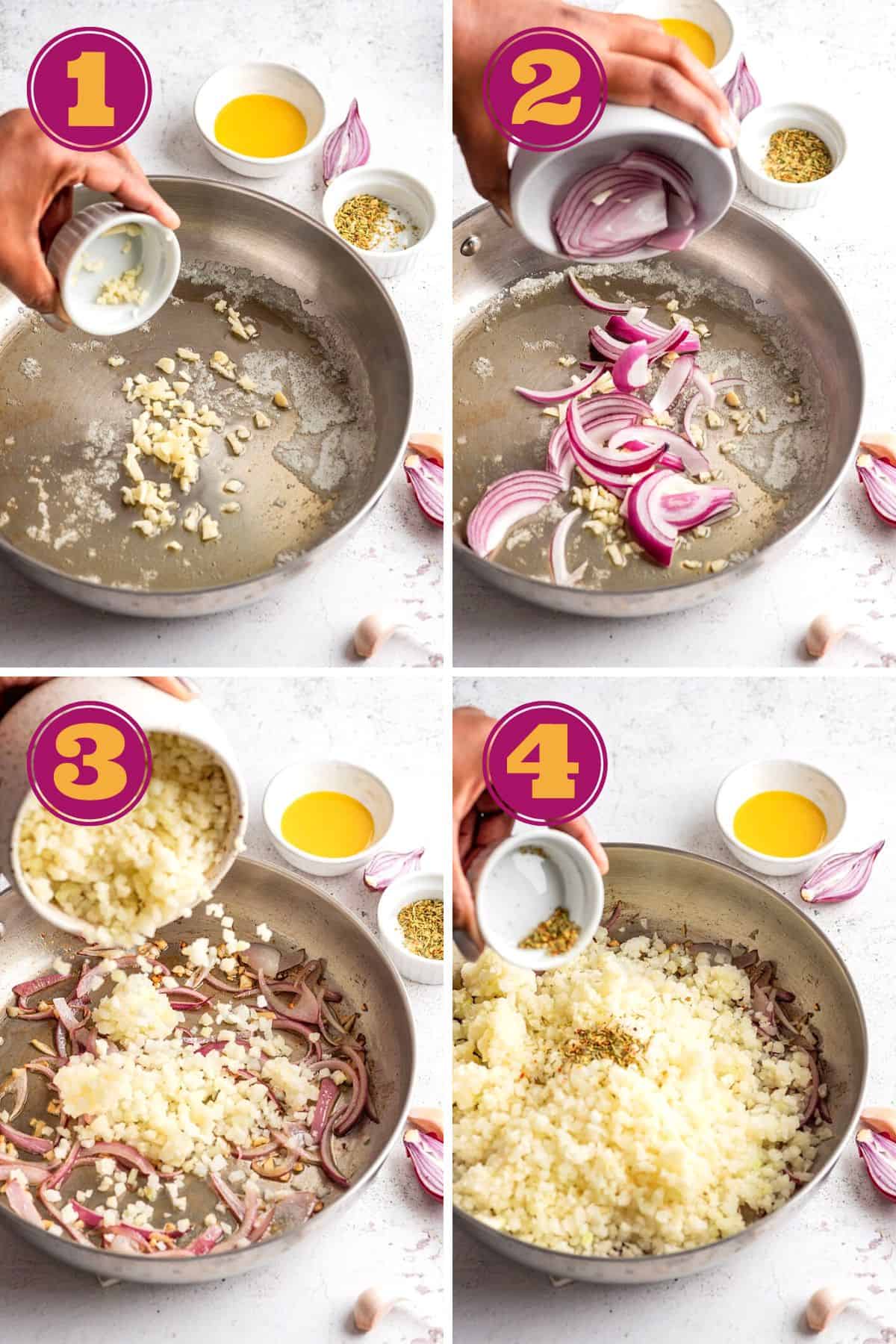
Top Tips & FAQs
Use Concentrated Bouillon
In this recipe, you’ll notice that I’m using concentrated bouillon and not broth. If you’ve made pilaf before, then you might be wondering why. I mean, part of the process of making rice pilaf is steaming the rice in broth.
Well, if you are using frozen cauliflower rice like I am, you want to avoid adding too much liquid. Since cauliflower rice cooks much quicker than regular rice and does not need to absorb liquid to become light and fluffy, I find that regular broth is not needed.
Instead, I’m using concentrated bouillon as a way to add flavor to the cauliflower rice without making it soggy
Cook until browned for cauliflower rice that is not soggy
I use frozen cauliflower rice in this recipe. In part, it is easier to cook, but also because it does not make a difference in taste in comparison to fresh cauliflower rice.
If you are worried about soggy cauliflower rice, then you should be sure to cook it until it is toasted and has some browned bits.
You can also use fresh cauliflower rice since it does make a difference to some who do not generally prefer cauliflower.
You can cook it until it is toasted and has some browned bits. You can also use fresh cauliflower rice that has not been previously frozen.
Rice pilaf is made of rice with seasonings cooked in broth. It can be tailored up with nuts, such as almonds, or even raisins to make it fancy.
Cauliflower Rice is a good grain-free substitute for rice. However, it does not taste like rice.
Rice pilaf generally has broth and other add-ons, such as onions, orange juice, currants, and raisins.
What To Serve This With
This is a super simple side dish that can pair well with almost anything. Some of my favorites include:
- Easy Pressure Cooker Whole Chicken
- Keto Shrimp Scampi
- Crispy Skin Pan-Seared Salmon
- Pressure Cooker Pot Roast
- Old Bay Shrimp with Garlic Butter Sauce
If you’d like low-carb rice and gravy, you can pair this with my keto gravy.
You can also have this as a side to this easy brown gravy meatloaf. It has less than 5g of carbs per serving and the sauce would pair perfectly with this cauliflower rice.
If you try this recipe, please stop back and leave it a star rating and/or a review in the comments. Stay connected & share photos of your creations with me & others on Instagram, Facebook, and Pinterest!
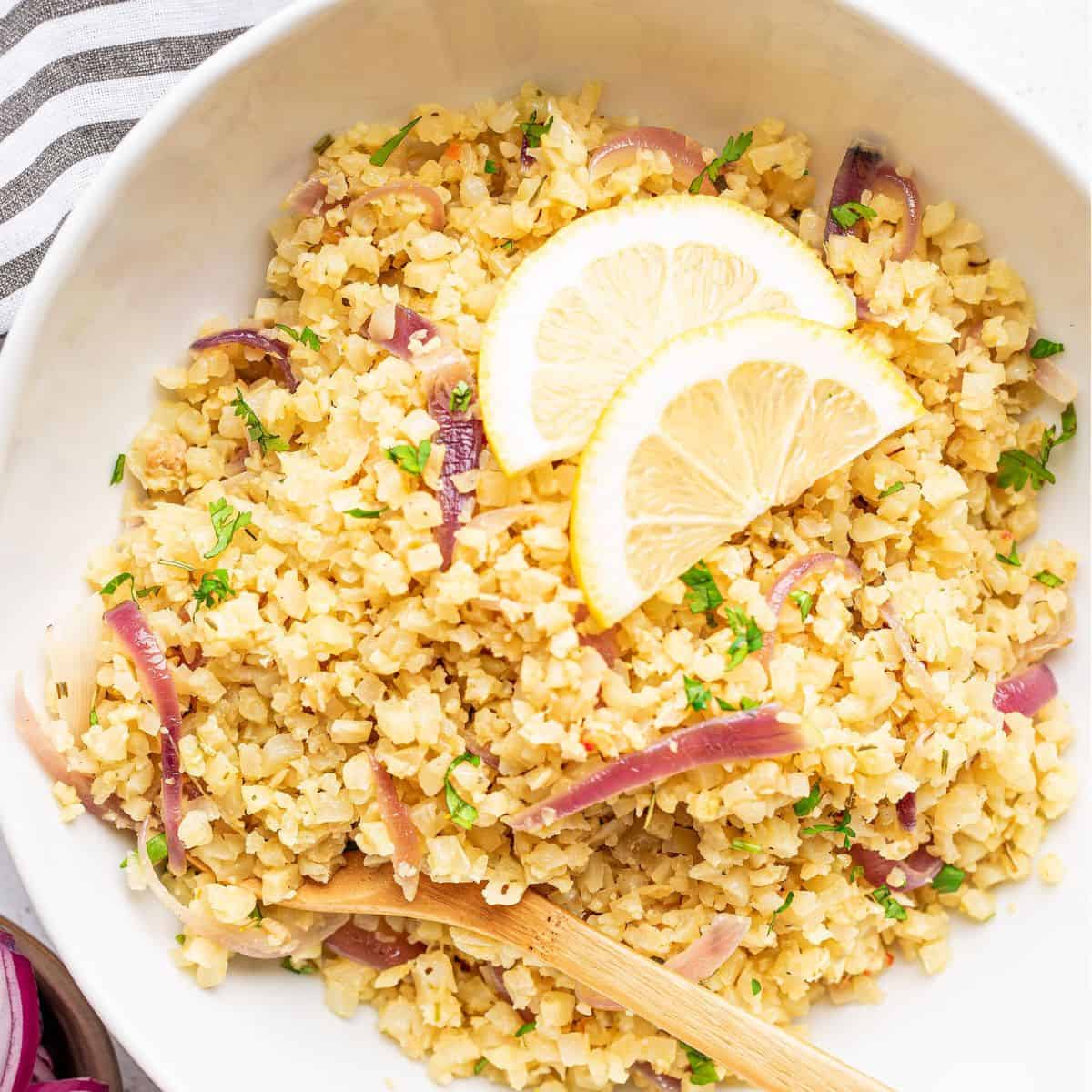
Buttery Cauliflower Rice Pilaf Recipe
Use DRDAVINAHS at checkout to save on some equipment & ingredients!
Recommended Equipment
Ingredients
- 12 oz Cauliflower Rice
- 2 tsp Chicken Better than Bouillon, low-sodium
- 1/2 tsp 24 Herbs Sprinkle Seasoning (Salt-free)
- 1/3 cup Yellow Onion, diced thinly, red onions and shallots work great too!
- 4 cloves Garlic, minced
- 2 tbsp Butter, unsalted
Instructions
- Add the butter, onions, and garlic to a pan on medium high heat.
- Saute until the onions become translucent.
- Add the cauliflower rice, seasonings and bouillon
- Stir occasionally and continue to cook until all of the liquid that comes from the frozen cauliflower rice clears.
Recipe Notes
Use Concentrated Bouillon
In this recipe, you’ll notice that I’m using concentrated bouillon and not broth. If you’ve made pilaf before, then you might be wondering why. I mean, part of the process of making rice pilaf is steaming the rice in broth. Well, if you are using frozen cauliflower rice like I am, you want to avoid adding too much liquid. Since cauliflower rice cooks much quicker than regular rice and does not need to absorb liquid to become light and fluffy, I find that regular broth is not needed. Instead, I’m using concentrated bouillon as a way to add flavor to the cauliflower rice without making it soggyCook until browned for cauliflower rice that is not soggy
I use frozen cauliflower rice in this recipe. In part, it is easier to cook, but also because it does not make a difference in taste in comparison to fresh cauliflower rice. If you are worried about soggy cauliflower rice, then you should be sure to cook it until it is toasted and has some browned bits. You can also use fresh cauliflower rice since it does make a difference to some who do not generally prefer cauliflower.Nutrition Details
The nutrition facts come from entering the recipe ingredients into Spoonacular API, a database of food ingredients. They may vary for any recipe based on the exact product used. The keto sweeteners I use have 0g net carbs & are not included because sugar alcohols do not impact most people. This is provided as a courtesy, but you can do your own calculations if you wish!
